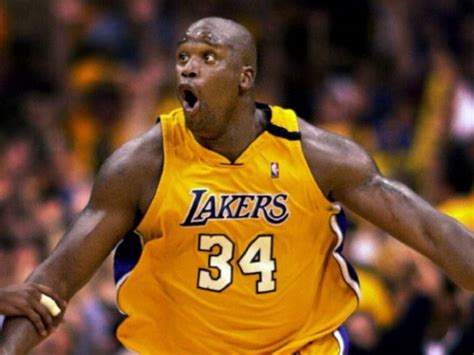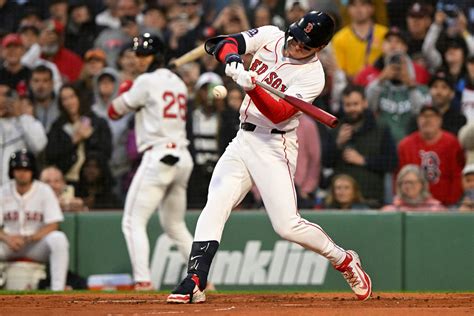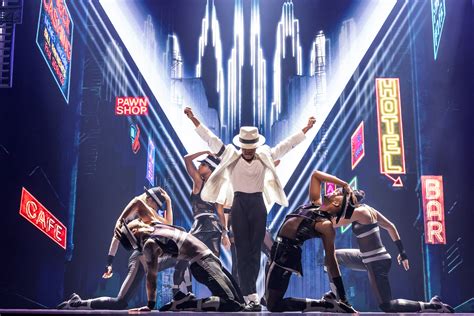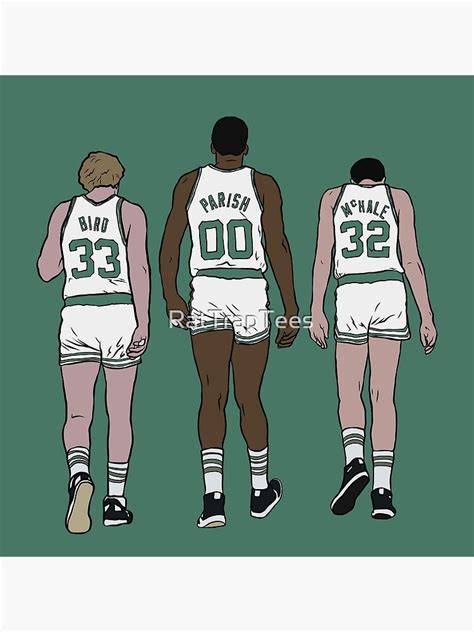
Shaquille O’Neal believes today’s NBA centers wouldn’t stand a chance against him in his prime, confidently stating, “I’d feel very sorry for somebody” if he were playing in the current era. The Hall of Famer expressed this sentiment on a recent podcast appearance, highlighting the perceived lack of dominant, physical centers in the modern game and contrasting it with his own imposing presence during his career.
Shaquille O’Neal, one of basketball’s most dominant forces, recently asserted that he would dominate the current landscape of the NBA. Speaking on a recent podcast, O’Neal didn’t mince words, expressing that he would feel sorry for any center tasked with guarding him in today’s league. His assertion comes at a time when the NBA’s style of play has shifted significantly, with an emphasis on perimeter shooting and versatile players, leading to a perceived decline in the traditional, bruising center.
“I’d feel very sorry for somebody,” O’Neal declared, confident in his assessment of how he would fare against today’s competition. He cited the differences in the game now versus when he played, noting the diminished emphasis on post play and the increased reliance on smaller, more agile players. O’Neal, a four-time NBA champion and three-time Finals MVP, built his career on overpowering opponents in the paint with his size and strength.
O’Neal’s comments sparked a wide range of reactions from fans and analysts alike. Some agree with his assessment, arguing that the league’s shift away from traditional centers would leave modern players ill-equipped to handle O’Neal’s sheer physicality. Others contend that today’s players are more skilled and versatile, capable of stretching the floor and exploiting O’Neal’s defensive limitations.
The debate over O’Neal’s hypothetical dominance in the modern NBA highlights the evolving nature of the game. While the league has undoubtedly changed, the question of whether today’s players could contain a force like O’Neal remains a fascinating point of contention. O’Neal’s prime coincided with an era of dominant centers, including himself, Hakeem Olajuwon, David Robinson, and Patrick Ewing. These players defined the game with their low-post scoring, rebounding, and rim protection.
O’Neal’s perspective reflects a broader sentiment among some basketball purists who believe the modern NBA has strayed too far from its roots. They argue that the emphasis on three-pointers and perimeter play has diminished the importance of traditional big men, leading to a less physical and less balanced game.
However, proponents of the modern game argue that the increased pace and spacing have made basketball more exciting and accessible. They point to the versatility and skill of today’s players, who are often capable of playing multiple positions and contributing in a variety of ways. The modern NBA also emphasizes player health and longevity, which has led to changes in training and nutrition that allow players to perform at a high level for longer periods of time.
O’Neal’s comments also touch on the broader debate about comparing players across different eras. It is inherently difficult to compare players from different generations due to the constant evolution of the game, rule changes, and advancements in training and technology. While O’Neal’s dominance in his era is undeniable, it is impossible to say with certainty how he would perform in today’s NBA.
One factor to consider is the increased emphasis on defensive schemes and strategies in the modern NBA. Teams are now more sophisticated in their approach to defending the post, often employing double teams and zone defenses to limit the effectiveness of dominant centers. O’Neal would undoubtedly face these challenges, and it is uncertain how he would adapt his game to overcome them.
Another factor is the increased pace of the modern NBA. Today’s teams play at a faster tempo, with more possessions and more opportunities to score. This could potentially benefit O’Neal, as it would give him more chances to establish position in the paint and exploit mismatches. However, it could also expose his conditioning limitations, as he was not known for his exceptional stamina.
O’Neal’s career statistics speak for themselves. He averaged 23.7 points, 10.9 rebounds, and 2.3 blocks per game over his 19 seasons in the NBA. He was a 15-time All-Star, an eight-time All-NBA selection, and a three-time Finals MVP. His impact on the game was undeniable, and he is widely regarded as one of the greatest centers of all time.
However, his career was not without its challenges. O’Neal struggled with free-throw shooting throughout his career, which opponents often exploited by intentionally fouling him. He also faced criticism for his conditioning and his occasional lapses in focus.
Despite these challenges, O’Neal remained a dominant force throughout his career. His combination of size, strength, and athleticism was unmatched, and he used his physical gifts to overpower opponents in the paint. He was also a skilled passer and a willing teammate, which made him an integral part of several championship-winning teams.
In conclusion, Shaquille O’Neal’s assertion that he would dominate the modern NBA is a bold claim that has sparked a lively debate among fans and analysts. While it is impossible to say with certainty how he would perform in today’s game, his dominance in his era is undeniable. The question of whether today’s players could contain a force like O’Neal remains a fascinating point of contention, highlighting the evolving nature of the game and the enduring legacy of one of basketball’s greatest centers. The comparison highlights the shift in basketball strategy, from a big-man-dominated sport to one that favors versatile, perimeter-oriented players. It’s a testament to O’Neal’s confidence and a reflection on the evolving dynamics within professional basketball.
The modern NBA has moved towards a more perimeter-oriented game, where centers are often required to be skilled shooters and playmakers in addition to traditional post play. This shift has arguably diminished the role of dominant, back-to-the-basket centers like O’Neal, who thrived on physicality and power. Many modern centers focus on spacing the floor, setting screens, and occasionally posting up, a stark contrast to O’Neal’s relentless attacks on the rim. The rules have also changed, with stricter enforcement of hand-checking and illegal defense, potentially making it harder for defenders to contain a player of O’Neal’s size and strength.
The discussion also brings forth the topic of adapting to different play styles. Could O’Neal, in his prime, adapt to the faster pace and increased spacing of the modern NBA? Similarly, could modern centers bulk up and adjust their game to handle O’Neal’s sheer power? These are questions that add layers to the hypothetical matchup.
Some might argue that O’Neal’s stamina and conditioning could be a liability in the modern NBA’s faster-paced game. However, O’Neal was known for his ability to impact games in shorter bursts, and his sheer dominance could outweigh any conditioning concerns. Additionally, modern training methods and nutrition could potentially improve O’Neal’s stamina, making him an even more formidable force.
The debate over O’Neal’s potential dominance also highlights the importance of coaching and team strategy. A team built around O’Neal would likely employ a different offensive system than most modern NBA teams, focusing on feeding him the ball in the post and creating opportunities for him to score. Defensively, the team would need to be strong on the perimeter to prevent opponents from collapsing the defense and double-teaming O’Neal. The effectiveness of O’Neal in the modern NBA would depend heavily on the team’s ability to adapt to his strengths and weaknesses.
Ultimately, the question of whether O’Neal would dominate the modern NBA is a matter of speculation. However, his comments serve as a reminder of his unparalleled dominance in his era and the evolving nature of the game. The debate is not just about O’Neal; it’s about how basketball has changed and what qualities are valued in today’s players. It’s a conversation that will likely continue for years to come, fueled by nostalgia, hypotheticals, and the endless fascination with comparing players across different eras.
O’Neal’s self-assured statement also brings to the forefront the changing skill set of NBA centers. In the past, centers were primarily judged on their rebounding, shot-blocking, and post-scoring abilities. Today, centers are also expected to possess perimeter shooting skills, ball-handling abilities, and the ability to switch defensively onto smaller players. While O’Neal excelled in the traditional areas, it is uncertain how he would adapt to the demands of the modern game.
Another aspect of the discussion is the evolution of defensive strategies. In O’Neal’s era, teams often relied on single coverage in the post, allowing dominant centers to go one-on-one against their opponents. Today, teams are more likely to employ double teams, zone defenses, and help rotations to limit the effectiveness of post players. O’Neal would undoubtedly face these challenges, and his ability to pass out of double teams and make quick decisions would be crucial to his success.
Furthermore, the NBA’s emphasis on analytics has changed the way teams evaluate players and make strategic decisions. Teams now have access to vast amounts of data that can be used to identify weaknesses in opponents’ defenses and exploit mismatches. This could potentially benefit O’Neal, as teams could use analytics to create favorable matchups for him in the post. However, it could also expose his own weaknesses, such as his free-throw shooting and his occasional lapses in defensive focus.
The comparison between O’Neal and modern centers also raises questions about the physical demands of the game. The modern NBA is faster-paced and more athletic than the NBA of O’Neal’s era. Players are expected to run the floor, jump high, and play with relentless energy. While O’Neal was undoubtedly a physical specimen, it is uncertain how his body would hold up to the demands of the modern game.
The impact of social media and the increased scrutiny of athletes is another factor to consider. In O’Neal’s era, athletes had more privacy and were not subjected to the constant surveillance of social media. Today, every move that a player makes is scrutinized and analyzed by fans and the media. This could potentially put more pressure on O’Neal, as he would be expected to live up to the lofty expectations that have been set for him.
O’Neal’s comments also serve as a reminder of the importance of confidence and mental toughness in professional sports. O’Neal was known for his unwavering self-belief and his ability to perform under pressure. These qualities were essential to his success, and they would undoubtedly be just as important in the modern NBA.
Ultimately, the question of whether O’Neal would dominate the modern NBA is a matter of opinion. There are valid arguments to be made on both sides of the debate. However, one thing is certain: Shaquille O’Neal was one of the most dominant players in NBA history, and his legacy will continue to be debated and celebrated for years to come.
The article also indirectly touches upon the evolution of the “center” position itself. No longer are centers exclusively back-to-the-basket bruisers. Players like Nikola Jokic and Joel Embiid showcase incredible passing, shooting, and ball-handling skills, making them offensive hubs. Would O’Neal’s traditional game translate against these versatile centers? His sheer size and power would undoubtedly cause problems, but his ability to defend the perimeter and keep up with the offensive creativity of these modern centers would be tested.
The financial aspect of the game has also dramatically changed since O’Neal’s prime. Player salaries have skyrocketed, and endorsement deals are more lucrative than ever. This could potentially impact O’Neal’s motivation and performance. Would he be as hungry to dominate if he were already making tens of millions of dollars per year? Or would the increased financial incentives motivate him to work even harder and achieve even greater success?
The relationship between players and coaches has also evolved over time. In O’Neal’s era, coaches often had more authority and were more likely to demand strict adherence to their game plans. Today, players have more input into team strategy and are more likely to challenge their coaches. This could potentially create friction between O’Neal and his coach, as O’Neal was known for his independent spirit and his willingness to question authority.
The role of strength and conditioning coaches has also become increasingly important in the modern NBA. Teams now employ highly specialized trainers who use cutting-edge techniques to improve players’ strength, speed, and agility. This could potentially benefit O’Neal, as he would have access to the best training and nutrition resources available. However, it could also expose his weaknesses, as his conditioning has always been a concern.
The impact of international players on the NBA is another factor to consider. In O’Neal’s era, the NBA was dominated by American players. Today, the league is much more diverse, with players from all over the world making significant contributions. This has led to a more global style of play, with an emphasis on ball movement, spacing, and teamwork. O’Neal would need to adapt to this new style of play in order to be successful in the modern NBA.
The evolution of media coverage has also changed the way the NBA is consumed. In O’Neal’s era, games were primarily broadcast on television. Today, games are available on a variety of platforms, including streaming services, social media, and mobile devices. This has led to increased fan engagement and a greater demand for content. O’Neal would need to be adept at using social media and other digital platforms in order to maintain his relevance and connect with fans.
The question of O’Neal’s potential dominance in the modern NBA is a complex one with no easy answer. There are many factors to consider, including the evolution of the game, the changing skill set of centers, the development of defensive strategies, and the impact of analytics and social media. Ultimately, the answer depends on one’s individual perspective and interpretation of the available evidence.
FAQ:
-
What was Shaquille O’Neal’s main claim about playing in the modern NBA?
Shaquille O’Neal stated that he would “feel very sorry for somebody” if he were playing against today’s NBA centers, implying that he would dominate them due to his size and strength.
-
Why does O’Neal believe he would dominate the modern NBA?
O’Neal’s belief stems from his perception that the modern NBA lacks dominant, physical centers and that the league has shifted away from traditional post play. He feels his sheer size and power would be unmatched.
-
How has the NBA’s style of play changed since O’Neal’s prime?
The NBA has shifted towards a more perimeter-oriented game, emphasizing three-point shooting, spacing, and versatile players. This has led to a diminished role for traditional, back-to-the-basket centers.
-
What are some potential challenges O’Neal might face in the modern NBA?
Potential challenges include adapting to the faster pace of the game, defending against centers who can shoot from the perimeter, and overcoming the more sophisticated defensive schemes that teams now employ. His free-throw shooting would also still be a liability.
-
How do rule changes affect the comparison between O’Neal’s era and today’s NBA?
Rule changes, such as stricter enforcement of hand-checking and illegal defense, could potentially make it harder for defenders to contain a player of O’Neal’s size and strength. However, increased attention to illegal screens could also hamper his ability to establish deep post position.









